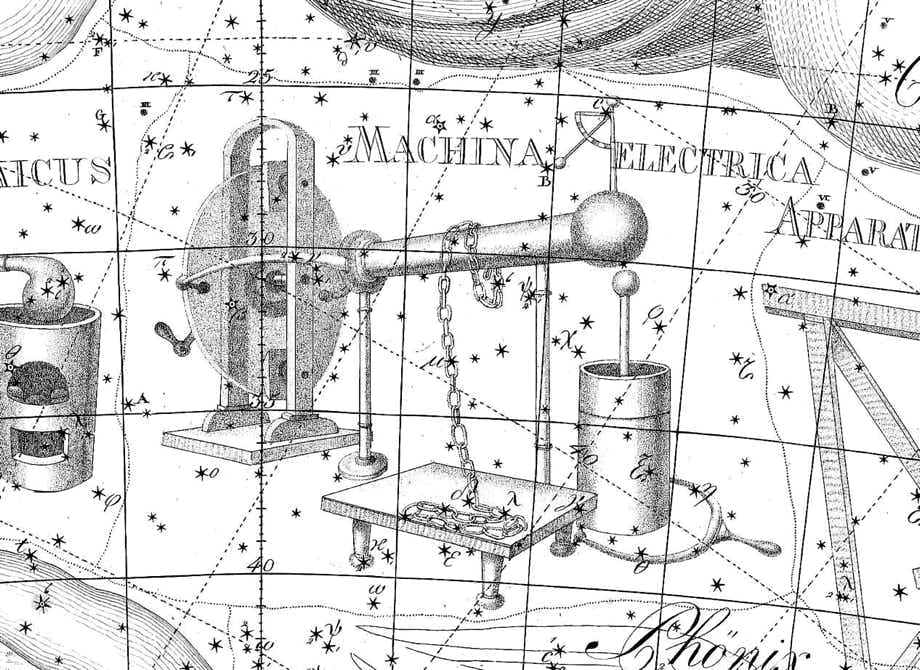
A constellation introduced by the German astronomer Johann Bode on his Uranographia atlas of 1801, representing one of the mechanical wonders of the age, an electrostatic generator used for electrical experiments. The device he illustrated is of the type devised by the English instrument maker Jesse Ramsden in the late 18th century (see below). Bode presumably was attempting to emulate the Frenchman Nicolas Louis de Lacaille who had introduced constellations representing scientific and technical inventions. Unlike Lacaille’s constellations, though, Bode’s new figures never achieved lasting acceptance. Most of the stars of Machina Electrica were so faint as to be barely visible to the naked eye.
Machina Electrica lay in the southern sky between Fornax and Sculptor, two Lacaille constellations. Bode expropriated stars from both of them to make Machina Electrica; worst to suffer was Sculptor, which was halved in extent. The annexed territory has since been returned.
Machina Electrica, a constellation invented by Johann Bode and shown on Chart XVII of his Uranographia star atlas of 1801. The device illustrated is of the type devised by the English instrument maker Jesse Ramsden in the late 18th century. It consists of a glass disk turned by a handle at left to create an electrical charge by friction. From this a cylindrical conductor bar at centre leads to a Leyden jar to store the charge. Next to the jar is a U-shaped discharge wand, while beneath the conductor bar is a table for experiments with a connecting chain. Most of the area occupied by this now-defunct constellation was taken from Sculptor, to the right of this image.
© Ian Ridpath. All rights reserved



